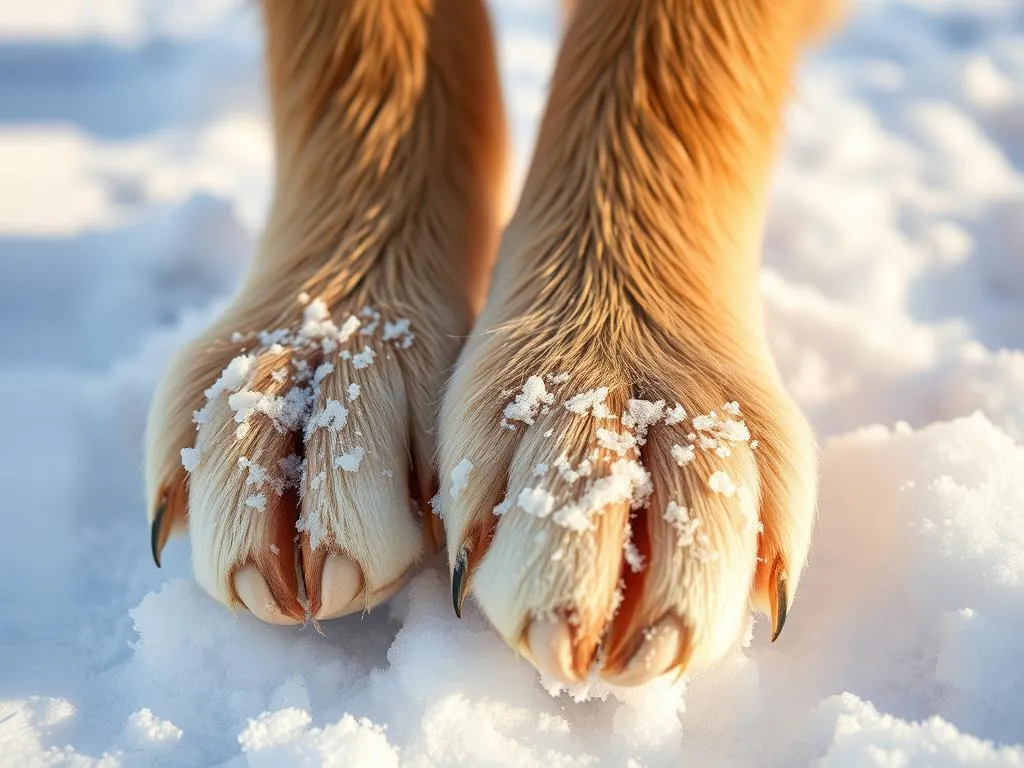
As winter sets in, it brings with it a unique set of challenges for dog owners, particularly when it comes to the health of our furry friends’ paws. Understanding how to protect dog paws in winter is crucial for ensuring your dog’s comfort and safety during walks and outdoor playtime. The cold weather, snow, ice, and harmful chemicals can all pose serious threats to your dog’s paw health. In this article, we will delve into the various risks associated with winter conditions, share essential paw care tips, discuss protective gear, and highlight safe walking practices to keep your dog’s paws healthy and safe.
Understanding the Risks to Dog Paws in Winter
Cold Weather Effects
The first step in protecting dog paws in winter is understanding how cold temperatures can impact your dog’s health. Just like humans, dogs can suffer from frostbite and hypothermia. Frostbite typically affects the extremities, such as the ears, tail, and paws. Signs of frostbite may include pale or grayish skin, swelling, and blisters. If you notice your dog limping or refusing to walk, it could be a sign of frostbite on their paws.
Hypothermia is another serious condition that can occur when dogs are exposed to cold for extended periods. Symptoms include shivering, lethargy, weakness, and even confusion. It’s essential to monitor your dog closely during colder months, especially smaller breeds or those with short coats, as they are more susceptible to these cold-weather effects.
Snow and Ice Hazards
Snow and ice present additional challenges for our canine companions. Accumulations can create slippery surfaces, increasing the risk of falls and injuries. Dogs can easily slip and injure their legs or paws while playing or walking on icy sidewalks. Moreover, hidden dangers such as sharp objects or frozen debris beneath the snow can lead to cuts and abrasions on your dog’s paws.
Chemical Exposure
One of the most significant threats to dog paws in winter comes from chemical exposure. Many municipalities use de-icing products and road salt to keep sidewalks and roads clear of snow and ice. Unfortunately, these substances can be toxic to dogs. If your dog ingests de-icing chemicals while licking their paws, it could lead to gastrointestinal distress or more severe health issues. It’s crucial to be aware of the products used in your area and to take precautions to prevent exposure.
Essential Winter Paw Care Tips
Regular Paw Inspections
To protect dog paws in winter, regular inspections are vital. After each walk, take a few moments to check your dog’s paws for any signs of injuries or irritations. Look for redness, cracking, or swelling, which could indicate damage from cold or chemicals. If you notice any abnormalities, consult your veterinarian for advice on treatment.
Keeping Paws Clean
Cleaning your dog’s paws after walks is an essential part of winter paw care. Snow, ice, and chemicals can accumulate on their paws, leading to irritation and potential health issues. Use warm water and a soft cloth or sponge to clean your dog’s paws gently. Avoid using hot water, as this can worsen any irritation.
For dogs that are particularly prone to paw issues, consider investing in a dog paw washer, which can help remove dirt and debris more efficiently.
Moisturizing the Paws
Just like our skin, your dog’s paws can become dry and cracked during winter months. This is where moisturizing products come into play. Paw balms and creams can help keep your dog’s pads hydrated and protected from the harsh elements. Look for products that are made from natural ingredients and are free from harmful chemicals. Regular application of paw balm can significantly reduce the likelihood of cracking and irritation.
Protective Gear for Dog Paws
Dog Booties: Benefits and How to Choose
One of the most effective ways to protect dog paws in winter is by using dog booties. These protective covers can shield your dog’s paws from the cold, ice, and potentially harmful chemicals. When selecting booties, consider the following key features:
- Material: Look for durable, insulated materials that provide warmth and protection.
- Fit: Ensure the booties fit snugly without being too tight. If they are too loose, they may fall off during walks.
- Traction: Choose booties with a non-slip sole to provide traction on icy surfaces.
Paw Wax: An Alternative Solution
If booties aren’t a good fit for your dog, paw wax can serve as an effective alternative. Paw wax creates a protective barrier on your dog’s paw pads, safeguarding them from both cold and chemicals. It’s easy to apply and can be used before walks to provide an additional layer of protection.
When considering whether to use booties or wax, think about your dog’s comfort and willingness to wear either option. Some dogs may adapt well to booties, while others may resist them.
DIY Solutions for Paw Protection
If you’re inclined to get crafty, there are DIY solutions for paw protection. You can create a homemade paw balm using natural ingredients such as coconut oil, beeswax, and shea butter. This mixture can be melted and blended together, then poured into a small container for easy use.
For a DIY bootie, consider using an old sock or fabric. Cut the sock to size, ensuring it fits snugly around the paw, and secure it with a band or tie. While these DIY solutions may not offer the same level of protection as store-bought options, they can be a quick fix in a pinch.
Safe Walking Practices in Winter
Choosing the Right Time to Walk
Timing can make a significant difference when it comes to walking your dog in winter. Aim for the warmest parts of the day, typically in the afternoon, to minimize exposure to extreme cold. Early mornings and late evenings can be particularly harsh, so try to avoid walks during these times whenever possible.
Safe Walking Routes
When planning your walks, select paths that are less likely to be icy or treated with chemicals. Parks and residential areas may be better options than busy streets. If possible, stick to well-maintained sidewalks that are clear of snow and ice. This will help reduce the risk of slips, falls, and paw injuries.
Monitoring Your Dog During Walks
Always keep a close eye on your dog while out for walks in winter. Watch for signs of discomfort, such as lifting their paws or hesitating to walk. If your dog appears to be struggling, consider shortening your walk or heading back home. Remember that dogs can’t communicate their needs as clearly as we can, so being observant is key.
Signs Your Dog Needs Veterinary Attention
Recognizing Paw Injuries
Despite your best efforts, injuries can sometimes occur. Be on the lookout for common signs of paw injuries, such as limping, excessive licking of the paws, or visible cuts and abrasions. If you notice any of these signs, it’s essential to consult your veterinarian for appropriate treatment.
When to Seek Help for Frostbite or Hypothermia
If you suspect that your dog may be suffering from frostbite or hypothermia, it’s crucial to seek help immediately. Critical symptoms to watch for include severe shivering, lethargy, or unresponsiveness in extreme cold. Your veterinarian can provide the necessary care to help your dog recover.
Regular Check-Ups: Importance for Winter Health
Routine veterinary check-ups are important year-round, but they become even more critical during winter months. Regular visits allow your vet to monitor your dog’s overall health and address any concerns that may arise during colder weather. This proactive approach can help prevent potential issues before they escalate.
Conclusion
As winter approaches, it’s essential to take proactive measures to protect dog paws in winter. By understanding the risks associated with cold weather, snow, ice, and chemical exposure, you can implement effective paw care strategies. Regular inspections, cleaning, moisturizing, and the use of protective gear can significantly reduce the chances of paw injuries and discomfort.
Being mindful of walking practices and recognizing when your dog needs veterinary attention will ensure that your furry friend stays happy and healthy throughout the winter months. Prioritizing your dog’s paw care is not just about comfort; it’s about safeguarding their health and well-being during the harsh winter season.









